MEDIA: NZ finance industry changing - sustainability, green momentum
Written by Bridget Coates, Chair of the Centre for Sustainable Fiannce, for the New Zealand Herald here.
Perhaps you haven't noticed, but the early stages of radical change are happening in our finance industry as we reshape our lending and capital markets, day by day.
Without great fanfare, there are now many innovative new green products available, a local reflection of the huge momentum globally towards financing a more sustainable future for our country and our planet.
The latest announcement, of the BNZ sustainability linked loans for Kiwi farmers and growers, based on compliance with standards set out in the SAFI guidelines (Sustainable Agriculture Financing initiative), is yet another breakthrough in a long list of noteworthy products which have been developed by our banks recently.
New Zealand farmers and growers now have an incentive to support sustainability initiatives within their business, as they create positive environmental and social impacts and reduce negative outcomes.
Farmers borrowing under these loan structures commit to meeting sustainability targets emissions reduction, water, waste, pollution, ecosystem management and improvements in long-term resilience, in return for lower interest rates.
The SAFI guidelines were developed by our local banks in conjunction with Ministry of Primary Industries, The Aotearoa Circle and passed on to Toitū Tahua, the Centre for Sustainable Finance.
These are just a few of the latest example of innovative, forward-thinking leadership by our banks and investors, who are driving the change towards decarbonising our economy and helping direct our investment dollars towards a greener future.
The sustainable debt market is growing rapidly: about 10 per cent of all debt instruments (loans and bonds) issued within Aotearoa New Zealand in the past two years are classified as sustainable debt – these products have been created to embed sustainability principles in the criteria for the loan or to tie the use of the loan proceeds to green assets or social projects.
As one example, the $1.25 billion Metlifecare loan structure integrates social and environmental goals, with pricing tied to achieving science-based targets for greenhouse gas emission reduction, 6 Green Star standards for construction of its new villages, as well as increasing the number of dementia care beds in its portfolio six-fold.
The Synlait ($50m), Southern Pastures ($50m) and Pamu ($85m) sustainability linked loans are further examples in the agriculture sector.
Genesis, Kāinga Ora, Goodman, Contact Energy, Spark, Kathmandu and several others have also innovated with sustainable finance forming part of their debt portfolios.
Mindset changes within board and management of borrowers, as well as banks, as they develop and execute these loans, have been profound.
Boards must commit the company long term to ambitious targets, which transforms the way the business is managed. Bank teams need to understand the sustainability material issues of their customers and work with them to ensure the targets align with internationally recognised frameworks, namely the Sustainability Linked Loan Principles.
For sustainability linked bonds, investors need to develop an understanding of new ESG metrics to properly understand these new investment opportunities and how they align with the Sustainability Linked Bond Principles.
There is no doubt this momentum will continue to accelerate as global investors and global consumers continually raise their focus on the broader "ESG" impacts of where they invest and spend, and demand that companies respond to the sustainability imperatives facing our world.
We can expect a broad universe of innovative and transformative products coming to market in coming months, with several large green and social loan products by many of our major corporates.
We can also expect more and more innovative social and green financing opportunities for large and small investors.
In our rapidly changing world, we can all make sure that our financial investments are assessed with a creative, long run, future-oriented mindset. Companies that embrace this change will position themselves well for ongoing access to attractively priced capital - a key foundation for a productive, prosperous and inclusive economy.
